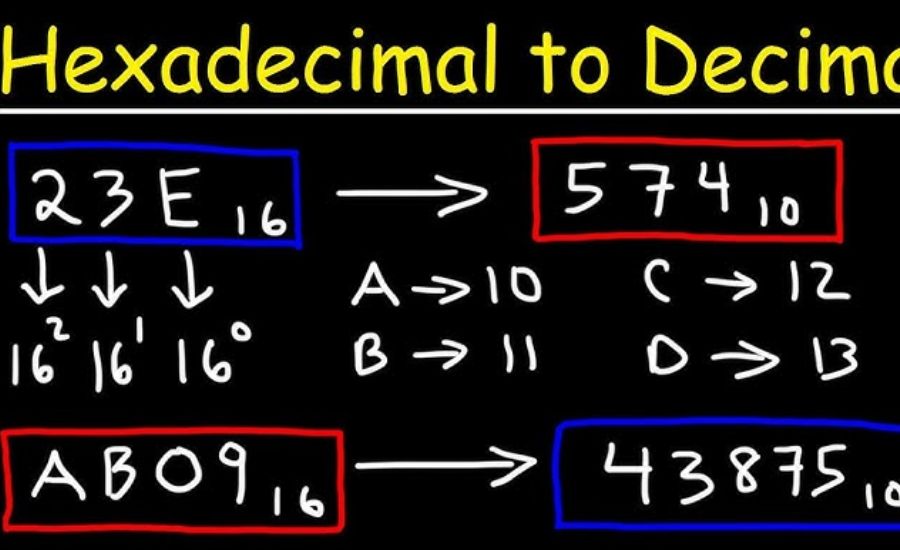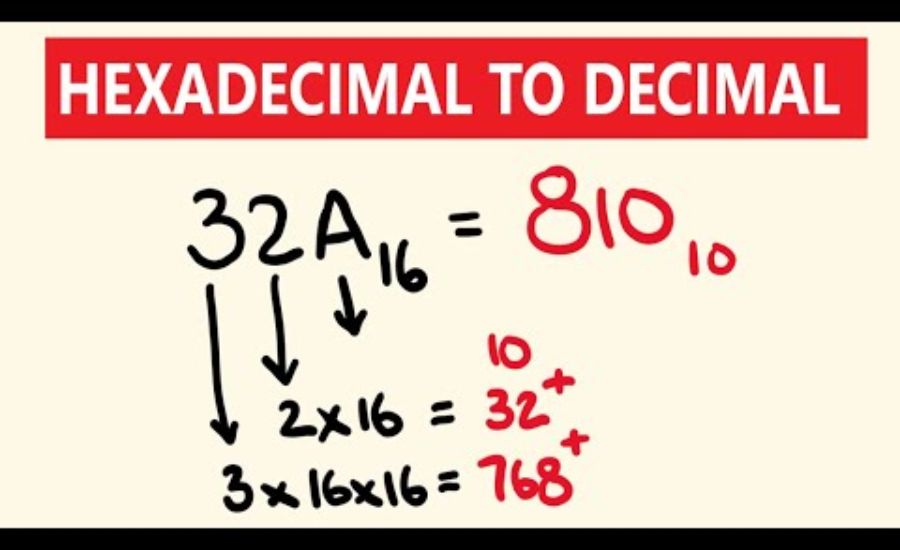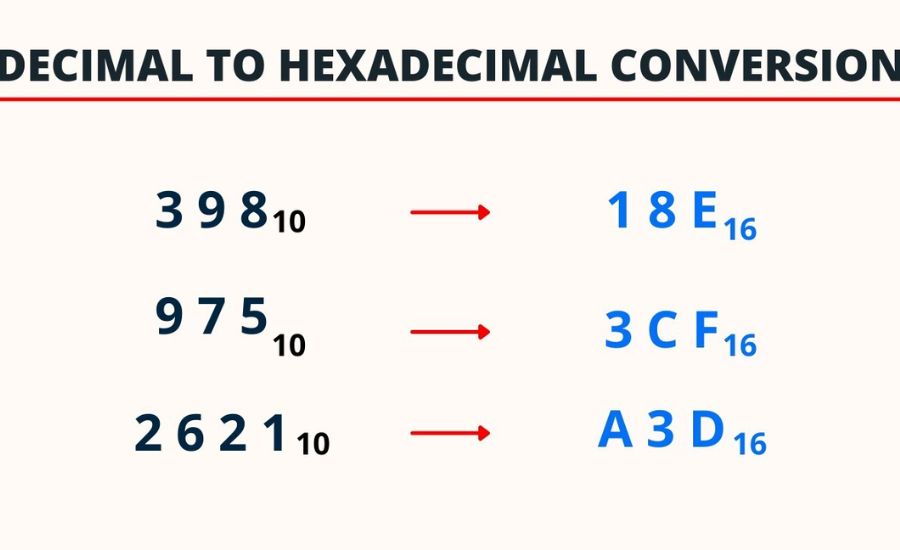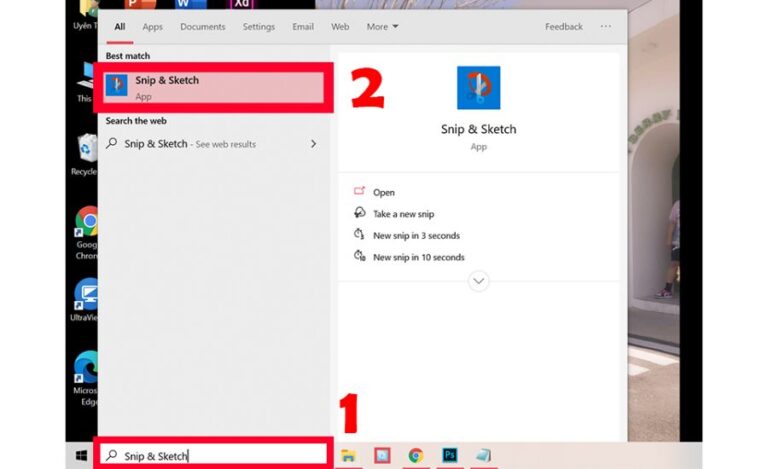Decimal to Hex Converter in Niagara 4 Tridium & More
Introduction to Decimal to Hex Converter in Niagara 4 Tridium
In the world of building automation and control systems, particularly when working with Niagara 4 Tridium, converting between different numerical systems is a common task. One of the most frequent conversions is from decimal (base 10) to hexadecimal (base 16). This conversion is essential when dealing with device addresses, data types, or communication protocols that require hexadecimal representation.
Niagara 4, Tridium’s powerful framework, provides built-in tools to simplify such tasks. Although Niagara 4 doesn’t offer a direct “decimal to hex” converter by default, you can use a combination of scripting and built-in functions to achieve this. For example, you can write a small script using JavaScript or BQL to perform the conversion from decimal to hexadecimal.
How to Convert Decimal to Hex in Niagara 4

To convert a decimal number to hexadecimal in Niagara 4, you can use a script like:This script takes the decimal value of 255 and converts it to hexadecimal, resulting in ff. This simple approach can be incorporated into your Niagara 4 projects to handle conversions efficiently.
By utilizing scripting capabilities in Niagara 4, Tridium users can automate and simplify the process of handling various data formats in their building automation systems.
Decimal to Hex Converter in Niagara 4 Tridium
Converting decimal values to hexadecimal is an essential task in building automation systems, especially when using Niagara 4 by Tridium. Hexadecimal is often required for tasks like device addressing, network protocols, and data handling, making this conversion a common need for professionals in the field.
In Niagara 4, while there isn’t a built-in converter specifically for decimal to hex, you can easily create one using the platform’s scripting capabilities. The Niagara 4 framework supports JavaScript, allowing users to write custom scripts to perform conversions. A simple script can take any decimal value and convert it to its hexadecimal equivalent.
For example, a JavaScript snippet to convert a decimal number to hex would look like thisThis script will convert the decimal number 255 to its hexadecimal form, ff. By using this approach, Niagara 4 users can automate and streamline the process of converting between number systems in their automation systems.
Whether you’re dealing with device addresses, protocol data, or other uses of hexadecimal in your Tridium project, the ability to easily convert between decimal and hex adds flexibility and efficiency to your system configurations.
Communication Protocols
In Niagara 4 by Tridium, converting decimal values to hexadecimal is a common task in building automation, as hex values are often used in communication protocols, device addressing, and configuration settings. While Niagara 4 doesn’t have a built-in function for decimal-to-hex conversion, you can easily perform this conversion using its scripting features.
Niagara 4 supports JavaScript, which allows users to write custom scripts to convert decimal numbers to their hexadecimal equivalents. This makes it simple to integrate the conversion process into automation workflows.
For instance, to convert a decimal number to hexadecimal in Niagara 4, you can use the following JavaScript snippet:
This script converts the decimal value 255 into the hex value ff. By leveraging this method, users can automate the conversion process whenever necessary, improving efficiency and accuracy in system configurations.
Whether you’re configuring devices, handling communication protocols, or working with specific values in your building automation project, being able to convert decimal to hex easily is a valuable skill for Niagara 4 users, enhancing the flexibility and functionality of your systems.
BACnet or Modbus Communication.
In Niagara 4, part of the Tridium platform, users can work with various data formats for automation and building management tasks. One common requirement in many systems is converting decimal values into hexadecimal (hex) format, often used in addressing, memory management, or communication protocols.
Niagara 4 offers multiple ways to achieve this conversion, including built-in scripting and functions within its framework. For example, users can utilize the “intToHex()” function in Niagara’s scripting environment to easily convert decimal values to hexadecimal format. This function takes an integer (decimal) input and returns its hex representation, simplifying tasks like handling device addresses or custom control logic.
To use this function effectively in Niagara 4, simply call the intToHex(decimalValue), where decimalValue is the integer you want to convert. The output will be a string that represents the equivalent hexadecimal value. This feature is particularly useful in situations where specific hexadecimal values are required for system configurations or integrations with other technologies, such as BACnet or Modbus communication.
By leveraging Niagara 4’s flexibility with built-in functions, developers and engineers can streamline workflows, reduce manual conversions, and ensure efficient communication between systems.
Building Automation Systems.

In Niagara 4, part of the Tridium platform, converting data between different formats is a common task, especially when working with automation systems or network communication protocols. One such conversion is from decimal to hexadecimal (hex), which is often necessary for operations like device addressing or memory management.
Tridium’s Niagara 4 platform makes this conversion easy through its scripting capabilities. Using Niagara’s built-in functions, developers can quickly convert decimal values into hex format. One useful function for this task is intToHex(). This function allows users to convert a decimal integer into its corresponding hexadecimal string.
To use the function, you would simply write a script in the Niagara 4 scripting environment where you input the decimal value and apply the intToHex() function. For example:
This would return “FF”, the hexadecimal equivalent of 255. This functionality is particularly beneficial when integrating Niagara 4 with other protocols or systems that require hex values for tasks like BACnet or Modbus communication.
By using the intToHex() function, Niagara 4 simplifies the conversion process, enabling smooth integration and efficient data management in building automation systems.
Ensuring Seamless Communication
In Niagara 4, part of the Tridium platform, converting decimal numbers to hexadecimal (hex) format is a useful skill, especially in automation and building management systems where data is often transmitted using hexadecimal values. Fortunately, Niagara 4 provides simple ways to convert between these formats, which is essential for working with various communication protocols or addressing schemes.
Niagara 4 offers a built-in scripting function for this task, such as intToHex(). This function allows users to easily convert a decimal value to its hexadecimal representation. For example, calling intToHex(255) would return FF, which is the hexadecimal equivalent of the decimal number 255.
This functionality comes in handy when integrating Niagara 4 with systems that require hex for device IDs, memory addresses, or in protocols like BACnet or Modbus, where hexadecimal is frequently used. By using simple scripts, Niagara 4 users can automate these conversions, ensuring seamless communication between devices and systems.
Overall, the decimal to hex conversion in Niagara 4 is a straightforward process that simplifies integration, reduces errors, and enhances the efficiency of building automation systems.
Converter in Niagara 4 Tridium

In Niagara 4, part of the Tridium platform, converting decimal numbers to hexadecimal format is an essential task for building automation systems. Many communication protocols and device addresses, such as BACnet and Modbus, use hexadecimal values, making it necessary to perform decimal to hex conversions regularly.
Tridium’s Niagara 4 provides an easy way to perform this conversion through built-in scripting functions. One such function is intToHex(), which converts a decimal integer into a hexadecimal string. For instance, using intToHex(255) will return FF, which is the hex representation of the decimal number 255.
This feature is particularly helpful in scenarios where system integration requires addressing, configuration, or even error code reporting that involves hex values. Additionally, it ensures compatibility across different systems, devices, and protocols, which is vital for seamless communication.
By leveraging the intToHex() function in Niagara 4, users can automate the conversion process, eliminating the need for manual calculations. This enhances efficiency, reduces the risk of errors, and ensures smooth data exchange across building automation systems.
Key Facts:
- Hexadecimal is often used in building automation for protocols like BACnet and Modbus.
- Niagara 4 offers built-in functions like intToHex() to simplify decimal to hex conversion.
- Automating this conversion reduces errors and improves system performance.
FAQs:
- What is the function for converting decimal to hex in Niagara 4?
- The intToHex() function in Niagara 4 is used to convert decimal numbers to hexadecimal.
- Why is hexadecimal used in building automation systems?
- Hexadecimal is commonly used for communication protocols and device addresses, making it easier to represent large numbers in a compact form.
- Can I automate the conversion in Niagara 4?
- Yes, you can use scripting in Niagara 4 to automate decimal to hex conversions, ensuring efficiency and accuracy in system operations.
Final Word on Decimal to Hex Conversion in Niagara 4 Tridium
In summary, converting decimal to hexadecimal is a common and important process in building automation systems, especially when working with the Tridium Niagara 4 framework. This process is essential for systems that rely on communication protocols like BACnet and Modbus, which frequently use hexadecimal numbers for device addressing and data transfer. With the intToHex() function in Niagara 4, users can efficiently convert decimal numbers to hexadecimal format directly within their systems. This built-in functionality streamlines processes, ensuring compatibility and preventing errors in communication across devices.
For more Information About blog visit idealrular






